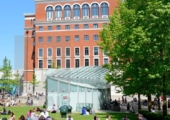December 7, 2017
What P T Barnum can teach us about the facilities management circus
Does any of this describe you? “You have a need for other people to like and admire you, yet you tend to be critical of yourself. While you have weaknesses you are generally able to compensate for them. You have considerable yet hidden strengths that you have yet to turn to your advantage. Self-controlled on the outside, you are slightly insecure inside. At times you have serious doubts as to whether you always make the right decision. You prefer a certain amount of change and become dissatisfied when hemmed in by limitations. You pride yourself as an independent thinker and do not accept the statements of others without satisfactory proof. But you also think it can be unwise to be too frank in revealing too much about yourself.” Does this sound familiar? Well it should because that is how most people see themselves.



















December 12, 2017
A 300 year old idea explains some of the enduring appeal of the open plan
by Mark Eltringham • Comment, Facilities management, Workplace design
In the 18th Century the utilitarian philosopher Jeremy Bentham came up with his idea of the Panopticon, a prison building with a central tower encircled by cells so that each person in the cells knew they could be watched at all times. Whether they were observed or not was actually immaterial. Bentham called it ‘a new mode of obtaining power of mind over mind’ and while he focused on its use as a prison, he was also aware of the idea’s usefulness for schools, asylums and hospitals. Bentham got the original idea following a visit to Belarus to see his brother who was managing sites there and had used the idea of a circular building at the centre of an industrial compound to allow a small number of managers to oversee the activities of a large workforce. This is something of a precursor of the scientific management theories of Frederick Taylor that continue to influence the way we work and manage people.
(more…)